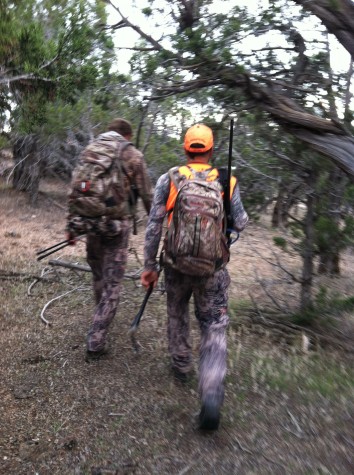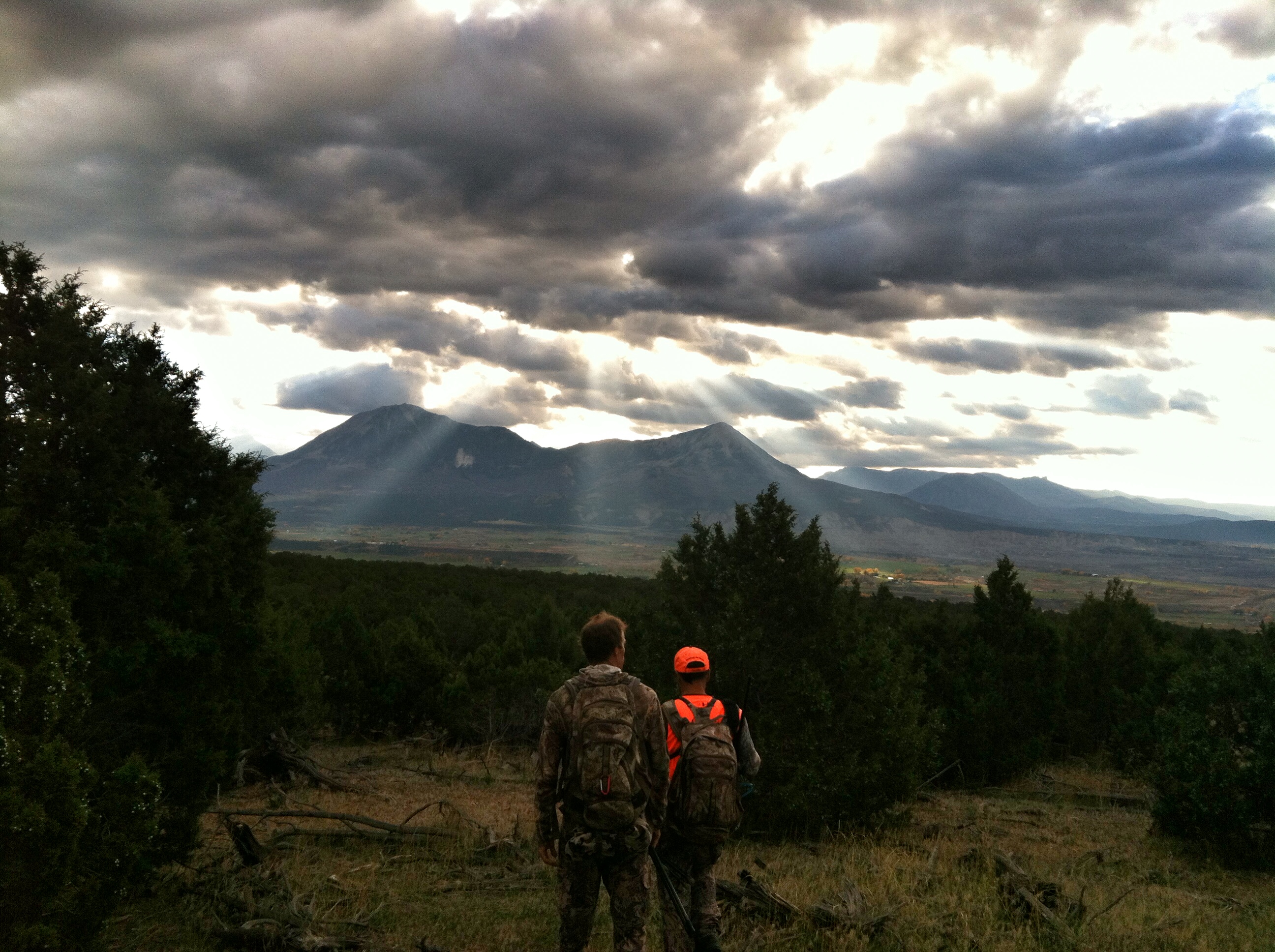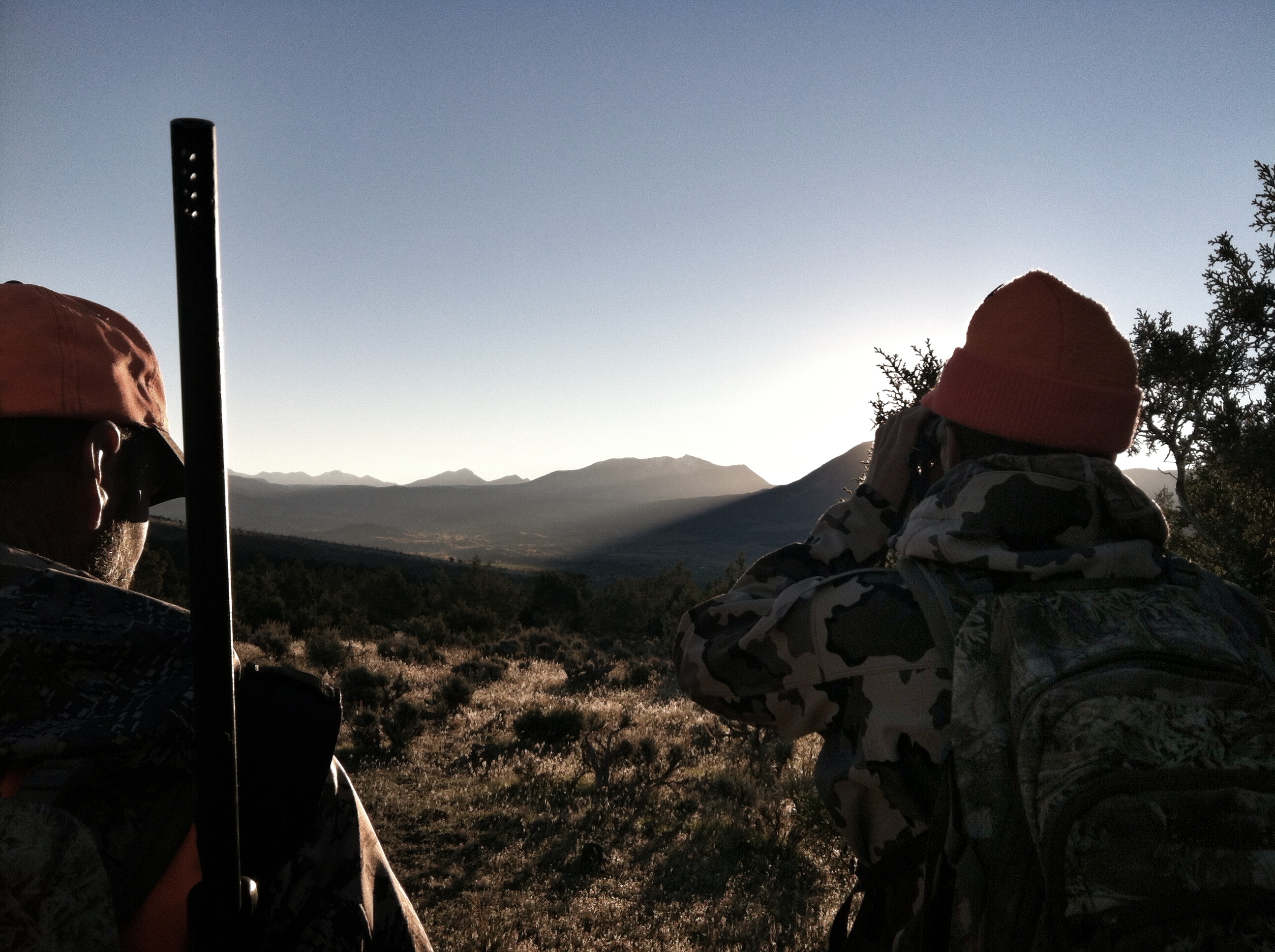A few years ago, I decided to take up hunting. This was kind of a big deal, because I’d spent the first decade-plus of my adult life as vegetarian. I became a big game hunter for the same reason I raise chickens — to know where my food comes from and ensure that it’s raised and harvested humanely. I figure if I’m not willing to kill it myself, I have no business eating it.
I quickly learned that hunting red meat is much harder than raising chickens. First of all, I had to acquire a hunter safety card, which required attending a one-day class on firearm safety and hunting regulations. The class included several videos demonstrating what not to do (like shooting from a vehicle or across a road), practice handling firearms and primers on hunting regulations. It ended with a written exam and a trip to the shooting range to fire a .22 rifle.
The next summer, I focused on learning to shoot. It took me multiple trips to the firing range before I felt comfortable handling the 30-06 rifle I’d chosen. And there was still the issue of actually using it to kill something.
My first season, I landed a private land cow (elk) tag — my first choice. I’m not shooting for the kill, I’m shooting to eat, so I went for the tastiest choice. The plan was to shoot one of the elk that come down to graze in the fields around our property. There was just one problem: the weather got weird that year and the elk didn’t show up during my season.
Last year, I decided to make it easier on myself. I got a doe tag. Around here, mule deer are as numerous as pigeons in a city, and nearly as tame. I had quite a few days in the season, and “shoot deer” soon became the carryover task on my to do list. I had plenty of time, so why not put it off until tomorrow? Finally, with just a couple of days left in the season, I decided it was now or never. I’d been carefully observing our neighborhood deer, and knew that they reliably came through the east side of our property in the late afternoon. I set up and prepared to fire.
After about 10 minutes, the first doe showed up. She ignored me at first, but when she got about 50 feet away, she noticed the rifle aimed at her, and looked up at me like, really? I had my can’t-miss shot, and I took a deep breath in a feeble attempt to strengthen my resolve. That’s when I noticed the mark on her side. I knew this doe. A few months earlier during our morning walk, my husband and I had found her tangled up in the cattle fence at the back of our property. She’d somehow failed to clear the barbed wire at the top of the relative low barrier, and her foot was tangled up in it. In her attempts to free herself, she’d rubbed a gash in her side. Dave had returned with wire cutters and set her free. I could’t bear the thought that we’d saved this deer so that I could kill her, and I set the rifle down and let her go again.
A few minutes later, another doe came by and stood just as close, glancing at me with only a hint of hesitation. There was no reason not to just go ahead and shoot, except that I just couldn’t. It felt like shooting the neighbor’s cow. That’s when I realized that I wanted a fairer fight.
So this year, I settled on a new plan. I got a tag for the meat I really wanted to eat — elk — and enlisted a mentor to help me do things right. Adam Gall is a professional hunting guide married to a dear friend of mine, and he was kind enough to take me under his wing. Adam and Ana live about 20 miles east of me, and this time of year gangs of elk often come down to rest at night in the fields behind their house. In the day, they climb up into the public land further north.
This past weekend, I met up with Adam and his guiding partner Josh Cranson in the pre-dawn hours. If I was really lucky, I might be able to shoot an elk right on Adam’s field, but it wouldn’t be like the deer I almost hit. Elk are far warier of humans. They spook easily and clear out fast.
The easy(ish) shot was not to be. The elk hadn’t come down to the field, so, with the first hints of daylight just starting to suggest themselves in the eastern sky, we headed north, quietly. The first thing I learned from Adam and Josh was to move silently and listen carefully. “Hear that?” Adam asked. It was an elk bugling, not far away. We stopped and listened for a bit.
We were in a tough spot. The elk were downwind of us, which meant that they knew we were here and would adjust their movements accordingly. But Adam is also a savvy creature, and he had a plan. We would head up the hill to move out of their wind. After a while, we reached an open area in the juniper brush and we waited, listened and watched. With their binoculars, Adam and Josh methodically scanned the landscape. For a while, we remained still and just listened.
I spend a lot of time outside, but suddenly it occurred to me how infrequently I sit still and listen intently to my surroundings. The sun was finally starting to poke over the Ragged and West Elk mountains and I was becoming hyper-conscious of everything around me. It felt good to be this present and aware.
 I don’t know how much time passed in this meditative state, but at some point we decided to continue up the hill and that’s when we saw them — a gang of beautiful elk ascending a ridge just above us. Flush with adrenaline, we dashed up the hill. The chase was on!
I don’t know how much time passed in this meditative state, but at some point we decided to continue up the hill and that’s when we saw them — a gang of beautiful elk ascending a ridge just above us. Flush with adrenaline, we dashed up the hill. The chase was on!
Eventually we reached our destination, a position on an adjacent ridge where I had a chance to get a shot if a legal bull (four or more points) passed through an opening. The brush was thick though, so there were no guarantees. We could hear that the elk were close, but they were moving toward a shady spot where they would likely bed down for a while. Adam used an elk bugle to entice one of the bulls to come closer. A five-pointer moved our way, and we got a nice look at him through the trees. But he was gone before I could set up a shot, and there wasn’t a good angle anyway.
It was getting late, but we knew where they were. We would return again in the late afternoon, to try and get a shot as they made their way back down the mountain.
We hiked back down to Adam’s place, and about five hours later, we went out again, retracing our steps from the morning. When we’d climbed to the upper hilltop, we stood still, again, and listened. I was starting to enjoy this state of deliberate awareness and observation for its own sake, and then we saw him — a six-point bull just across from where we were sitting.
I set up the shooting sticks and in a moment he was in my crosshairs. Unlike that time with the deer, I felt ready — eager almost — to pull the trigger. My heart was beating fast, but I was surprisingly calm. I was ready to do this. I had a bullet in the chamber, and I slid the safety off. The bull was right there. Problem was, he was looking at me straight-on, and that’s not the kind of shot you take. Adam was watching the animal through his binoculars. “Wait, wait…” he told me. And then, in an instant, my magnificent elk was gone. I never saw him again.
We waited and watched for a while, but that bull and his group were descending the hill in an area that offered few opportunities for a clean shot. We started down the hill and Adam spied, through his glass, a cow and then another bull on the other side of the ridge. We tracked them for a while, and for a few minutes it seemed like I might get another chance. But again, the elk eluded us. Again, we walked down the mountain with empty packs.
The next morning we tried once more. It was still dark when we set out, and we were in Adam’s front yard when we heard the first bugle call. The elk were close. Tantalizingly close. Josh met us again, and we hiked up to the canal road and waited, listening to hear where the elk would ascend the hill. They seemed headed for a gully just to the west, so we quietly snuck that way along the canal road. But they’d come closer to us than we’d realized, and we turned a corner to see an elk snout poking up, about to climb onto the road. We retreated into the woods, and watched as several legal bulls and some cows rambled across the road (where it is not legal to shoot). This time we were in perfect position.
My blood pumped with adrenaline as we bounded up the hill to get ahead of them. I’d get a shot as they made their way back up the mountain. It seemed like everything was falling into place. And then, bang — whoosh!
When we’d run into the elk along the canal, we’d pushed them a little west, directly into some other hunter’s range of fire, apparently. The other hunter was to the west of us, shooting at the elk, which were between us. The sound of the bullet coming toward us was all I needed to know I wanted to get the hell out of there. We quickly scrambled higher and as we did, we heard more shots. Our plan was done.
 After resting for a little while, and waiting, futilely in hopes of perhaps finding another bull, we turned and headed back down the hill.
After resting for a little while, and waiting, futilely in hopes of perhaps finding another bull, we turned and headed back down the hill.
“Don’t feel bad,” Adam told me, recalling how it had taken him multiple seasons to get his first elk. Later, I would look up statistics on this unit and see that the success rate was in the 20-percent range last year.
Yes, I was disappointed, but I was also hooked. On our first outing, being out with Adam and Josh made me feel a little bit like those rich guys who pay sherpas and mountain guides to haul their butts up mountains like Everest. I very quickly understood how little I knew, and how much they did. I realized that I don’t want to keep mooching their skills forever. I want to master them myself. Adam and Josh taught me how to pay attention and listen intently. I learned how to move like a true creature of my habitat. I didn’t bag an elk, but I took my first steps toward acquiring the knowledge that will help me eventually get one.
*Photos by Christie Aschwanden

Great description of becoming an “adult onset” hunter. It’s neat to hear from another woman’s perspective many of the same motives and emotions that I, too, associate with hunting each year.